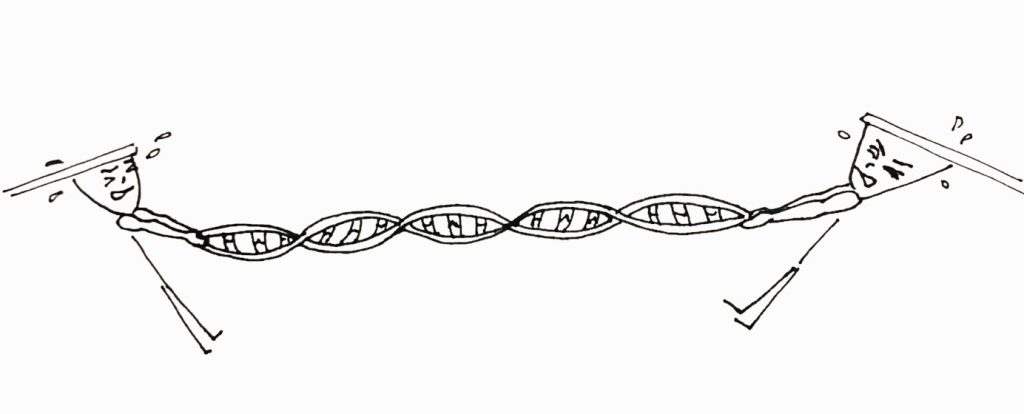Bio-nanomechanics
Mechanics of Biomolecules:
From atomic workings of nucleic-accids up to protein’s nanomechanical maps

Mechanical properties of biomolecules regulate a wealth of biological processes: from unwinding and stretching of genetic material involved during its replication and repair up to modulating the interaction between different bio-molecules. Thus it stands that mechanical properties provide vital information to understand the activity of bio-molecules inside the cell and ultimately enable unlocking the miseries of life itself. In this regard, a rather paradigmatic example is offered by double stranded nucleic-accids (DNA and RNA), where various biological processes interrogate their mechanical properties. Such processes rely on the ability for dsDNA and dsRNA to deform when subjected to mechanical stress or upon interaction with other molecules. From the local motion of individual base-pairs upon protein-binding, to global folding of genome-long polymers, these distortions span a wide range of length scales. While immense efforts have been devoted to unveil the mechanical properties of these duplexes, connecting the dynamics at such multiple length scales still remains a challenging problem. Over the past years we have developed a simulation strategy that allowed to unveil the atomic workings of the mechanical properties of nucleic acids thus rationalizing several paradoxes, and through synergistically combining it with AFM/OT/MT experiments we related our finding with processes occurring at much larger scales.
Among the major achievements one finds:
- We have solved a decade long paradox concerning the differential mechanical response dsDNA and dsRNA. We provide a physical mechanism that explains the nonintuitive opposite twist-stretch response of these molecules, ultimately tracing back to their most fundamental difference, i.e. the absence of an oxygen atom in the DNA sugar (DesoxyRibose).
- We have demonstrated the the DNA sequence, besides being a chemical code it is also a physical code. By changing the sequence one can stiffen the molecule by a factor of three, and we relate this with activation/deactivation of several known biological process. Moreover, we demonstrate how common mutation can reverse this behavior by finely regulating the DNA mechanical/biological response.
- We have performed the first nano-mechanical mapping of a full sized protein using atomically detailed simulations. With it we have related previous Young modulus measurements to the associated atomic deformation, thus determining the limiting spacial resolution of this technique. Moreover we unraveled an exceptional high lateral resolution in the non-contact regime, thus providing new exciting routes to explore.
Want to learn more?
Understanding the mechanical response of double-stranded DNA and RNA under constant stretching forces using all-atom MD
Alberto Marin-Gonzalez, J. G. Vilhena, Ruben Perez and Fernando Moreno-Herrero, Proceedings of the National Academy of Sciences 114 (27), 7049 (2017).